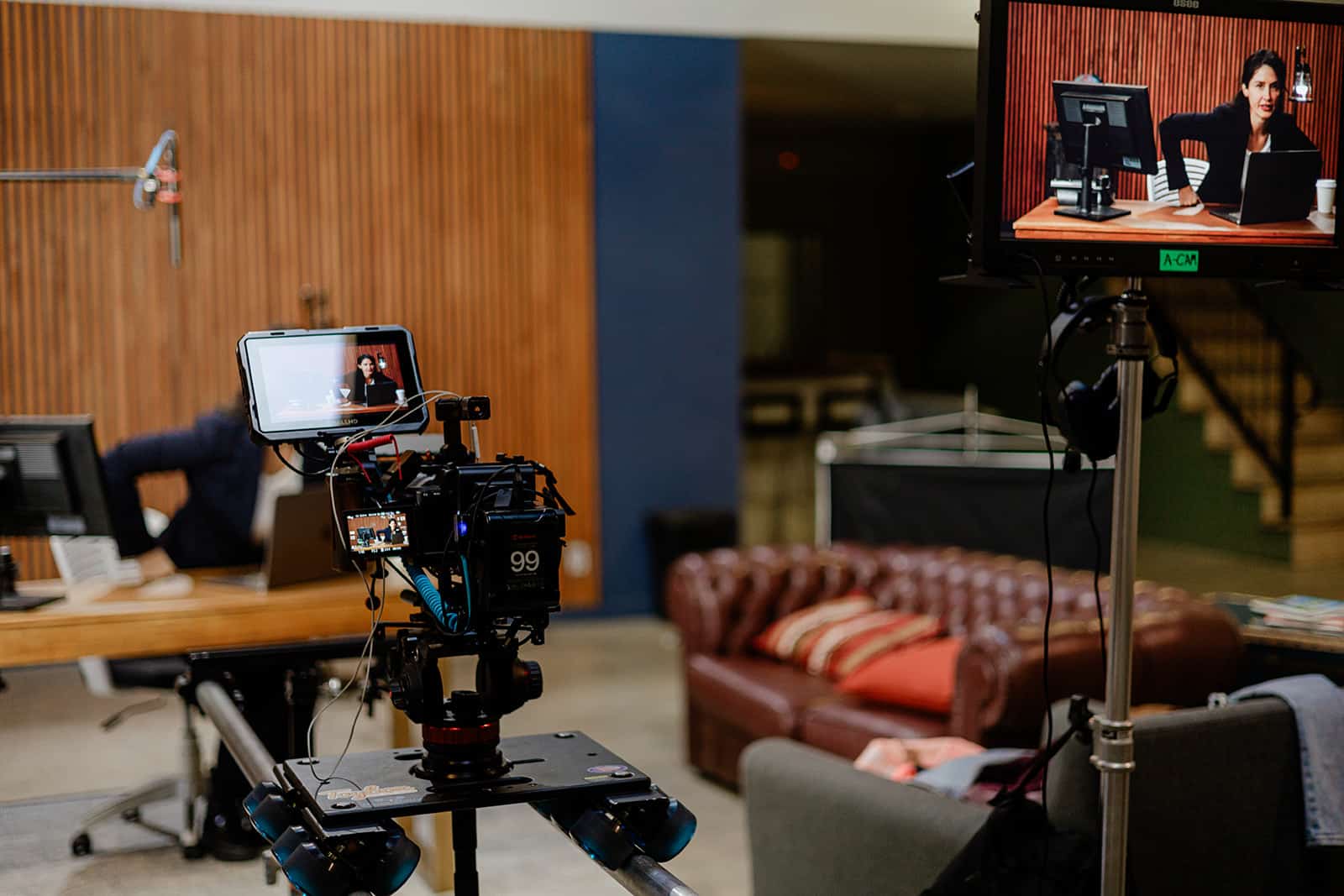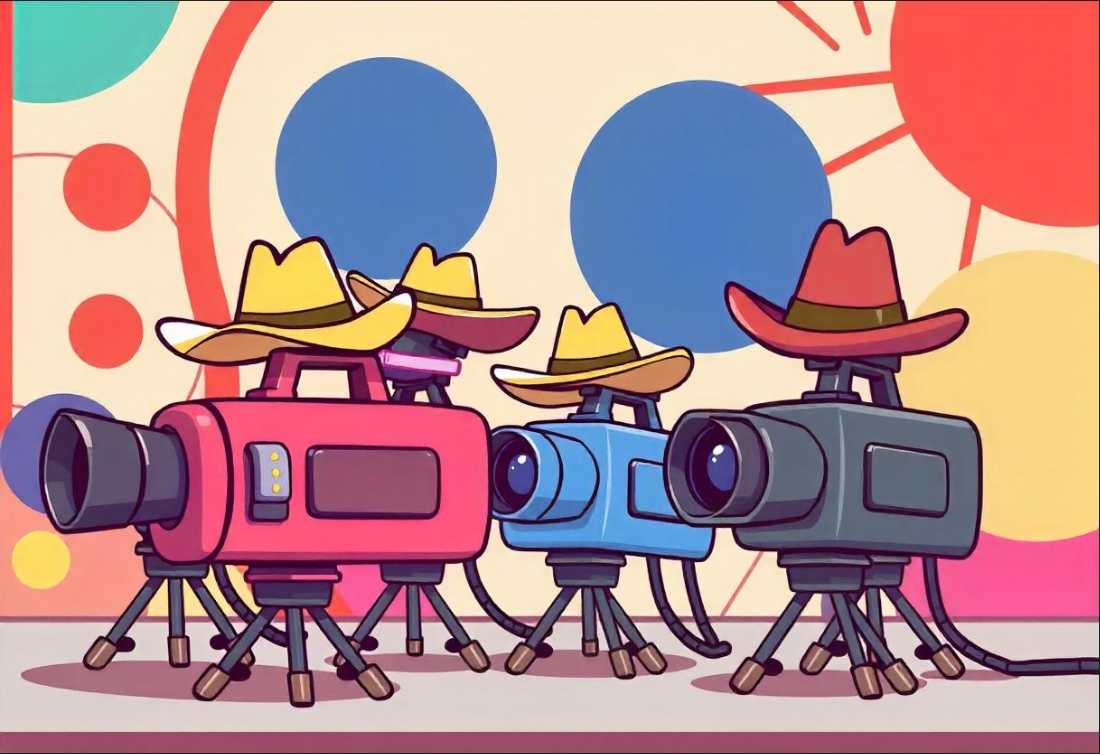You’ve got a great product, a bold vision, and maybe even a killer logo. But if no one knows your brand exists, what’s the point?
That’s where video marketing swoops in like your startup’s not-so-secret weapon. It’s fast, it’s fun, and when done right, it makes people stop scrolling, start watching, and remember you.
How you can build the brand awareness through video marketing?
| 1. Start with clear goals 2. Know your audience 3. Use the right video types 4. Keep it short and engaging 5. Use storytelling to create an emotional connection | 6. Be authentic 7. Share on social platforms 8. Track performance 9. Optimize with insight 10. Study other startup successes for inspiration |
Understanding Brand Awareness
Brand awareness simply means how familiar people are with your brand.
It is about how you can recognize a brand just by hearing the name or seeing the logo. Brand awareness is so strong that when someone says “coffee,” Starbucks or Nescafé pops into your mind. That’s brand awareness in action.
Brand Awareness vs. Brand Recognition
These two terms are often used together, but they’re a little different:
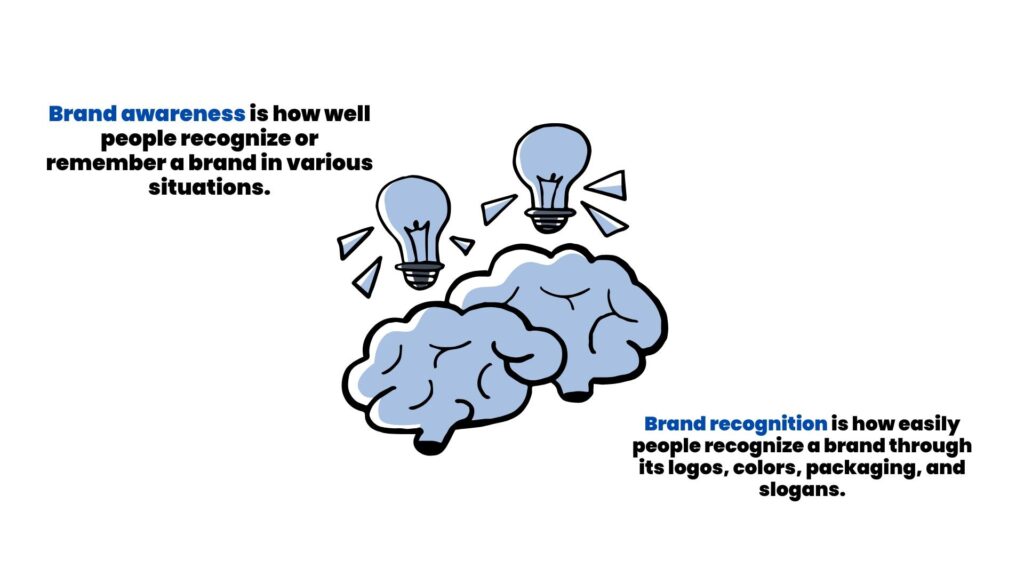
| Brand Awareness | Brand Recognition |
| → Consumer familiarity with brand identity and products → When people remember your brand and know what it stands for → Knowing the brand’s story, mission, and emotional significance | → The initial step for broader brand awareness → When someone can identify your brand by looking at your logo, colors, tagline, or packaging → Knowing the brand from cues like logos or jingles |
So, brand recognition is about “Have I seen this before?”
Brand awareness is about “I know this brand, and I know what it’s about.”
The Emotional Side of Brand Awareness
Brand awareness isn’t about visibility alone. It creates a connection between the brand and its consumers.
A strong brand is one that has a relationship with its audience by staying consistent, reliable, and emotionally relevant.
Here’s how emotional connection is part of brand awareness:
- Shared values: People are likelier to remember and support a brand that aligns with their beliefs.
- Trust and loyalty: The more someone is aware of your brand (and has good experiences with it), the more likely they are to trust and stick with you.
- Memorability: When a brand makes someone feel something, whether joy, nostalgia, or inspiration, it becomes unforgettable.
Why Should Startups Prioritize Video Marketing?
A startup runs on limited time, budget, and resources. So, every move needs to count, at least in the initial stages.
Video marketing has a big impact with high engagement. It is now one of the best tools for early growth and visibility.
Statistics on Video Consumption and Impact on Purchase Decisions
Here’s what the numbers say about video marketing:
- Almost everyone (83% to be exact) wants to see more videos from brands online. [Source: Wyzowl, 2025]
- Most people, about 82%, say they’ve been talked into buying something after seeing a brand’s video. [Source: Vidico, 2025]
- Videos get shared 1,200% more than links and text put together on social media. [Source: Vidico, 2024]
- Websites that have videos are 53 times more likely to show up on Google’s first page. [Source: Tao Digital Marketing]
- People tend to stick around on websites with video content for 88% longer! [Source: Twicsy, 2025]
Why Should Startups Use Video Marketing?
There are clearly some advantages that lead startups to choose video over other content types. Here’s why the video stands out, especially for small or new businesses:
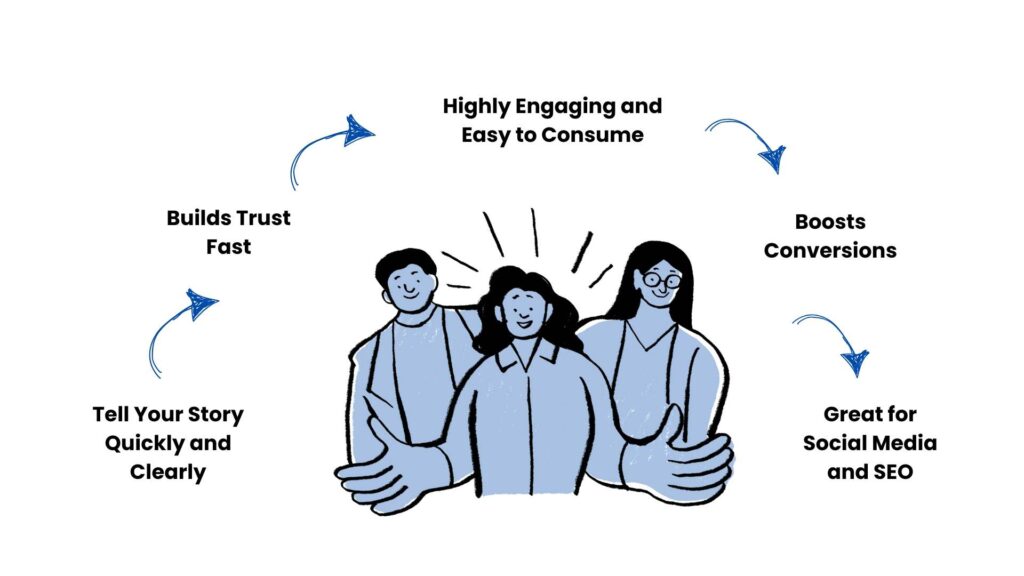
1. Tell Your Story Quickly and Clearly
- Startups often have to explain what they do.
- A quick video explains your product and demonstrates how it works.
- Tell your brand story better than a long blog post or wall of text.
2. Builds Trust Fast
- Seeing real people behind the brand adds authenticity.
- Product demos, testimonials, or behind-the-scenes clips humanize your business.
- Build emotional ties with audiences
3. Highly Engaging and Easy to Consume
- People scroll fast. The video makes them stop.
- Capture more attention than blogs, emails, or reports
- Unlike text, videos don’t require effort
- Videos are entertaining and easy to digest, especially on mobile.
4. Boosts Conversions
- Adding a video on your landing page can increase conversions by up to 80%.
- Companies that use video marketing see conversion rates that are 34% higher than those that skip it.
- People feel more confident buying when they’ve “seen” what they’re getting.
5. Great for Social Media and SEO
- Social platforms prioritize video, so your content gets more reach.
- Increases visitor retention.
- Video increases website engagement, improving search engine rankings.
Developing a Video Marketing Strategy for Startups
You can’t just take the camera and start recording randomly. A proper video capturing process takes time and a proper strategy. You will need a structured approach for that.
Here is our take on that as an expert video production company:
1. Set Clear Goals and Define Success Metrics
Before you start “record,” know why you’re making the video.
Begin by asking yourself:
- Are you trying to increase brand awareness?
- Do you want to drive traffic to your website?
- Is your goal to generate leads or boost sales?
- Are you aiming to educate your audience?
Once you set the goal, match it with measurable success metrics:
| Goal | Success Metric |
| Brand Awareness | Video views, reach, impressions, shares |
| Engagement | Likes, comments, watch time, click-through rate |
| Lead Generation | Form submissions, email sign-ups |
| Sales | Conversion rate, purchases |
| Customer Retention | Repeat views, customer feedback |
- Tip: Don’t try to achieve everything with one video. Focus each video on a specific goal.
2. Identify and Segment Your Target Audience
You can’t talk to everyone, and that’s okay!
Startups should zero in on who they want to reach. How about breaking your audience into clear segments:
- Demographics: Age, gender, location, income level
- Psychographics: Interests, challenges, values
- Behavioral data: New visitors vs. returning, product usage patterns
For each segment, ask:
- What problems are they trying to solve?
- Where do they hang out online? (YouTube, Instagram, LinkedIn?)
- What kind of video content would they relate to (educational, fun, inspiring)
3. Align Video Content with the Buyer’s Journey
Different people need different types of videos. You will decide their journey with your brand. Here’s how to match content with each stage:
| Stages | Goal | Video Types |
| Awareness Stage (Just discovering you) | Grab attention and introduce your brand | → Brand story → Explainer videos → Social media teasers → Short reels or behind-the-scenes |
| Consideration Stage (Learning more about you) | Build trust and show value | → Product demos → Customer testimonials → How-to or educational videos → Comparison videos |
| Decision Stage (Ready to act) | Encourage them to buy, sign up, or get in touch | → Free trial walkthroughs → Personalized product videos → Special offer videos → Case studies |
Types of Video Content to Boost Brand Awareness
Startups can use any type of video to reach the maximum audience. There are a few types of video content that fit perfectly for startup businesses that want brand awareness.
1. Explainer Videos
These are short, engaging videos that clearly explain:
- What your product or service do
- Use engaging visuals, animations, and clear scripts
- How it addresses a problem
- Why it matters
Why they work:
- Breaks down complex ideas in a fun, easy-to-understand way
- Great for your homepage, landing page, or YouTube channel
- Helps first-time visitors “get” what you do within seconds
2. Product Demo Videos
These show your product or service in action.
What they do:
- Highlight key features
- Show real-life use cases
- Answer common questions visually
Reasons they contribute to awareness:
- People remember what they see, not just what they read
- Provide potential customers with a hands-on feel
- Builds confidence in your product early in the journey
- Address customer pain points
3. Customer Testimonials & User-Generated Content
There’s nothing more convincing than real people talking about your brand.
Why it works:
- Grow trust through social proof
- Makes your brand feel more human and reliable
- Encourages word-of-mouth and organic sharing
- Build authenticity, trust, and credibility
- Customers feel confident with genuine endorsements
4. Behind-the-Scenes Videos
Take your audience on a tour of your world.
Show things like:
- How is your product made
- A day in the life at your startup
- Team culture and workspace vibes
Why it’s powerful:
- Builds authenticity and transparency
- Helps people connect emotionally with your brand
- Makes your business more memorable and approachable
- Strengthen emotional bonds through teamwork and values
5. Brand Story Videos
This is your chance to show the “why” behind the brand.
Tell them:
- What inspired your startup
- The problem you’re solving
- Your mission and values
Why it matters:
- People don’t just buy what you sell, they buy why you sell it
- Make lasting impressions by connecting personally with viewers.
- Emotionally driven stories stick in people’s minds and hearts
- It goes beyond the mere product features
6. Social Media Short-Form Videos & Live Streaming
These are your most shareable and snackable content formats.
Short-form video (like Reels, TikTok, YouTube Shorts):
- Typically under 60 seconds
- Perfect for brand teasers, quick tips, and product highlights
- Works excellently with trends, music, and humor
Live streaming:
- Q&A sessions
- Product launches
- Live behind-the-scenes tours
Why these boost awareness:
- Gets more reach on social platforms
- Capture attention quickly, increase shareability, and enhance engagement
- Encourages real-time interaction and engagement
- Helps you stay visible and relevant
- Help startups boost visibility and connect with their audience
Relatable Reads: 10 Top Video Content Types for an Effective Marketing Strategy – LocalEyes
Leveraging Video Distribution Channels
Once your video is ready, think strategically about where, how, and to whom you deliver it. Here are the places you can upload to:
1. Social Media Platforms
Social media is where you can find most of your audience. However, each platform has its own vibe and audience, so your approach should adapt accordingly.
| Platforms | What it does |
| → Best for short, visual, engaging content → Use Reels for reach, Stories for behind-the-scenes, and Posts/IGTV for longer videos → Hashtags and trending audio mean more visibility | |
| TikTok | → Great for creative, informal, and viral content → Effective for startups sharing product hacks, transformations, and relatable stories → Hook viewers in the first 3 seconds |
| → Still relevant for many B2C audiences → Good for native video posts, live videos, and paid ads → Upload directly to the platform (not as YouTube links) | |
| → Ideal for B2B, founder stories, and product explainers → Keep videos professional yet personable → Great place for thought leadership videos and startup milestones | |
| YouTube | → Best for longer-form content, tutorials, product demos, and educational content → Make use of titles, thumbnails, and SEO-friendly descriptions → Great for building searchable video libraries |
2. Paid Targeted Video Ads
When you want to reach new audiences fast, video ads are gold.
Why they work:
- Platforms like Meta, YouTube, and TikTok Ads enable hyper-targeting based on demographics, interests, and behavior.
- Test video versions (A/B testing) to find what works best.
- Remarketing targets people who’ve interacted with your brand.
Use paid ads to:
- Launch a product
- Drive traffic to a landing page
- Build brand awareness in new regions or segments
3. Collaborations and Partnerships
Collaborate to tap into existing communities and build trust faster.
Options include:
- Influencer shoutouts or product reviews
- Partner with complementary brands for joint videos or interviews
- Cross-promote via guest appearances on each other’s channels
Why it works:
- You gain instant credibility through association
- You reach warm, engaged audiences that already trust the person or brand
Check out YouTube Shorts vs TikTok: Which Platform Is Better for Creators? – LocalEyes
Measuring and Optimizing Video Performance
Let’s say you have already uploaded the video. Now, it’s time to see how the video is performing in the real world. Here’s how you can measure the video’s success:
Track Key Metrics That Actually Matter
You can examine many numbers, but focus on the ones that relate directly to your goals.
Top Video Metrics to Track:
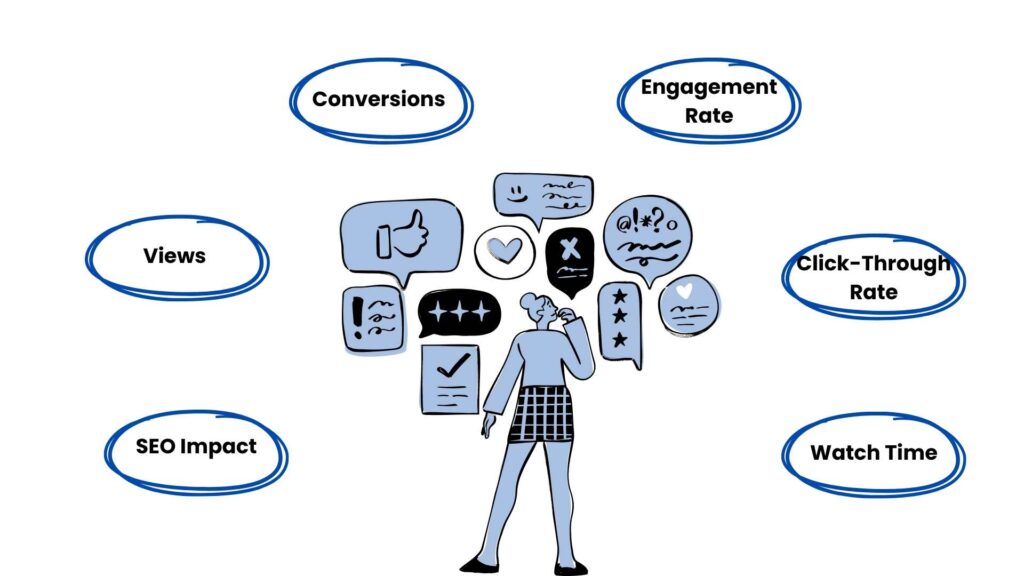
- Views (How many times was the video watched?)
- Good for gauging reach and awareness
- But beware: a “view” might be just a few seconds on some platforms
- Watch Time / Average View Duration
- Tells you how long people are staying engaged
- Helps identify if your content holds attention or drops off early
- Engagement Rate (Likes, comments, shares, and saves)
- Reflects how compelling your content is
- More engagement indicated better organic reach (especially on social)
- Click-Through Rate (How many viewers clicked on your CTA)
- Crucial if your goal is traffic or conversions
- Conversions (Sign-ups, downloads, purchases)
- The most important metric for ROI
- Track with UTM links, landing pages, or analytics tools
- SEO Impact (for YouTube and websites)
- Measure traffic from search, video rankings, and keyword visibility
- Use tools like YouTube Analytics or Google Search Console
Relatable Reads: Video SEO In 2025: 10 Proven Tips To Improve Your Website’s Rankings – LocalEyes
Let’s Check Some Case Studies
Dollar Shave Club: “Our Blades Are F*ing Great”**
Video Type: Brand story + explainer
What Worked:
- A bold, funny, very human founder-driven narrative
- Simple production, shot in one day
- Clear value proposition: inexpensive, quality razors delivered to your door
Results:
- The video went viral and received 28 million views.
Lesson:
- Authenticity, humor, and clarity are powerful combinations. You don’t need big bucks; you just need a clear message and personality.
Frequently Asked Questions: Video Marketing for Startups
How to start video marketing?
Start by defining your goal, knowing your audience, and planning simple, clear content.
What is a startup video?
A startup video introduces your brand, product, or mission in a clear, engaging way.
What is the best video marketing?
The best video marketing tells a story, connects emotionally, and solves problems.
How can I sell my video?
Promote your video on social media, your website, and via email. Use paid ads for reach. Include a strong CTA and track results. Collaborate with influencers to expand exposure.



